Smile Please because your teeth need sunlight
If you've ever wondered why so many individuals in public life have such perfect smiles, you might be surprised to find out how many of them have had cosmetic dental work ! that is Porcelain Veneers..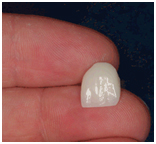


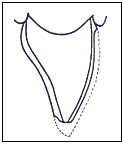
Porcelain Veneers
Porcelain veneers are a rapid, aesthetic, and safe way to correct unattractive front teeth. Porcelain veneers correct heavy permanent stains, teeth that are crooked, disproportionate, small (with spaces), and structurally damaged. Porcelain veneers are shells of ceramic material that can be chemically bonded to tooth structure. They are the primary treatment modality for the popular extreme makeovers. The bonding strength between a porcelain veneer and the tooth surface is often so great that a trauma may cause a fracture within the tooth and not at the interface between the porcelain veneer and the tooth surface. Cosmetic Repositioning as an alternative to orthodontics with the placement of porcelain veneers as seen below. Before Porcelain Veneers Patient
had narrow, unevenly shaped front teeth
Before Porcelain Veneers Patient
had narrow, unevenly shaped front teeth
 After Six Porcelain Veneers
After Six Porcelain Veneers
Procedure:


You may find the solution to your individual dental problem by viewing the before and after photos of our patients who have had cosmetic dentistry improve their smiles. With digital imaging software, we can show you how cosmetic dentistry can improve your smile before you begin treatment.
Porcelain jacket crowns and laminate veneers both require two office visits. At the first appointment we remove any old bonding and prepare the teeth. We also make impressions and choose the shade and shape of the porcelain. When you leave the office, temporary bonding is used to cover the prepared teeth. Approximately one week later, the final porcelain veneers are permanently bonded at the second appointment.
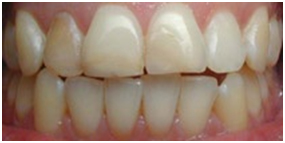 Before:Patient had severe tetracycline staining and old bonding.
Before:Patient had severe tetracycline staining and old bonding.
 After:Four Porcelain Veneers
After:Four Porcelain Veneers
Dental porcelains and ceramics are superior to metals with respect to corrosion, galvanism, and biocompatibility. Emergence profiles are less likely to be over-contoured, as is often the result with metal-ceramic restorations in an effort to mask metal sub-structure.
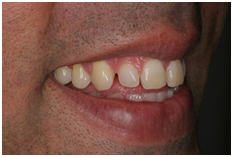 Before:Spacing in the teeth
Before:Spacing in the teeth
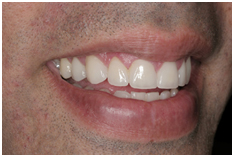 After:Four Porcelain Veneers
After:Four Porcelain Veneers
Shaping and polishing is done with burs, sandpaper disks, rubber wheels, points, cups, and polishing pastes. Composite shaping, contouring and texturing require different techniques depending on the desired result.
 Before:Irregular Front Teeth.
Before:Irregular Front Teeth.
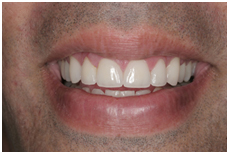 After:Porcelain Veneers
After:Porcelain Veneers
Whatever type of Veneers have to be done for a particular type of Staining or Discoloration, is decided by your dentist. Your Cosmetic requirements to improve your looks are well taken care of at Dr. Grover’s Dental Clinic in least cost & minimum visits.
The conclusions of many studies are that porcelain surfaces accumulate much less dental plaque compared to resin composites, gold alloys, and amalgams. In addition, the plaque formed on ceramic surfaces is of healthier composition. However, the long-term prognosis of porcelain veneers is much better.
Composite Veneers:
 Before - Stained Teeth
Before - Stained Teeth
 After - Composite Veneers
After - Composite Veneers
Composite veneers cover the facial surface of teeth to change tooth color, position or shape. Addition of composite to tooth structure increases tooth size and therefore, there is often tooth reduction to make room for composite
placement. Amount of reduction is determined by position of original tooth in relation to the desired position and color of tooth structure in relation to the thickness of composite materials required to block out color.
Case of Composite Veneers
Enamel and dentin bonding is done to maximize interface strength. Acid is placed on enamel for 15 to 30 seconds. Acidity is neutralized so only 10 microns of enamel is removed. Inorganic structure dissolves quicker than organic structure and a porous, honeycomb surface is created. Enamel bonding agent applied should be thin which is achieved by placing a small amount on a brush or blowing away excess. Enamel bonding resin does not require light curing prior to composite placement and allows easier wetting of the surface by composite.
Composite veneer failure or fracture occurs either at intracomposite intersurface, separation of bonded interfaces or fracture of supporting tooth structure. Force intensity, duration, frequency and direction verses restoration strength determine success or failure of a restoration. Direction of forces is lateral, rotational, downward, and pulling upward resulting in tensile, shear or compressive failure. Preparation design, material selection and placement technique are critical resist forces achieved by your dentist.
Composite block outs darkness from the back of the mouth. Placement of opaque material or dentin shades covered with translucent material produces a natural looking restoration that is not influenced by this darkness. Blending composite color to tooth color is further achieved by proper composite selection, placement and preparation design.




